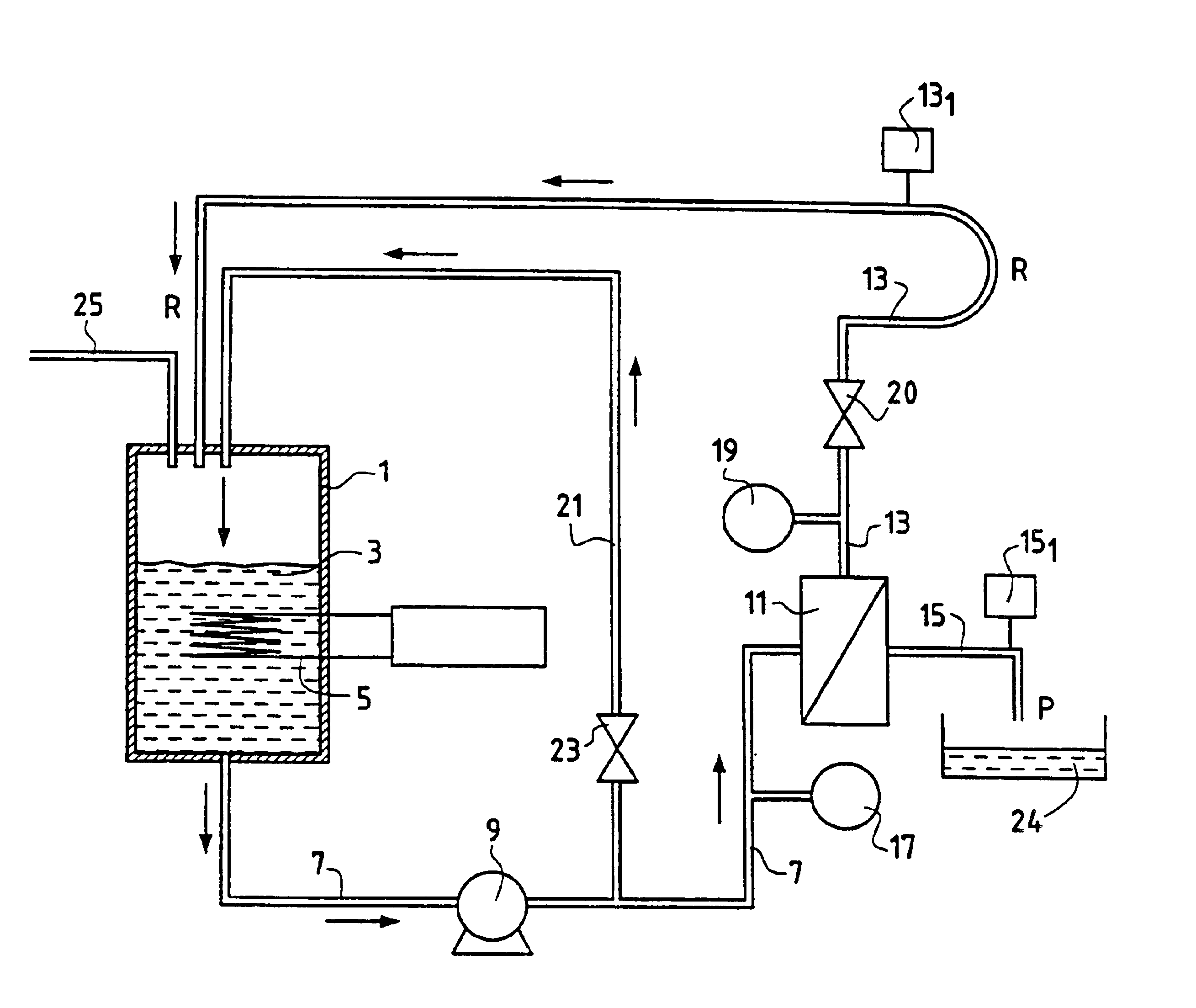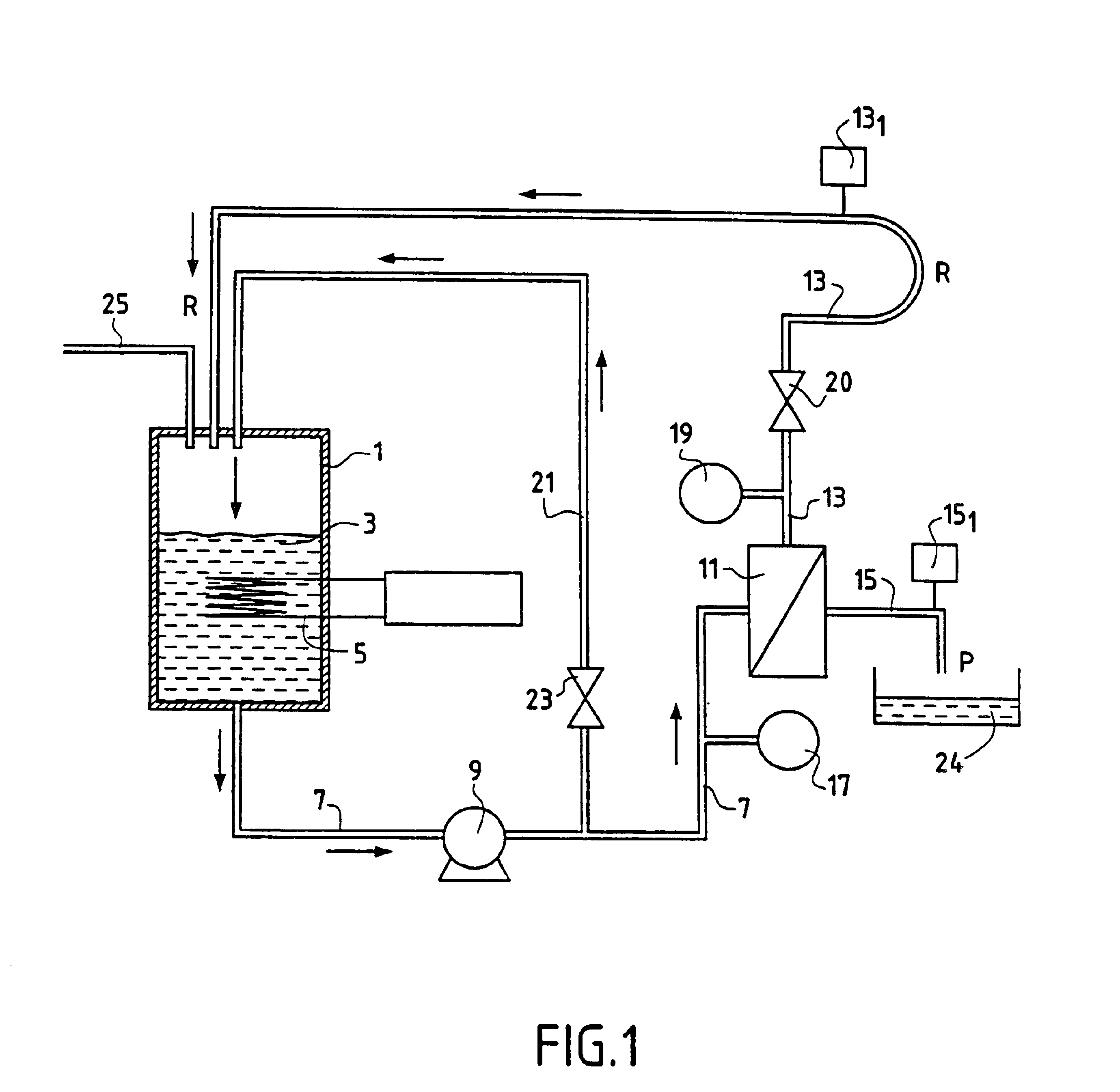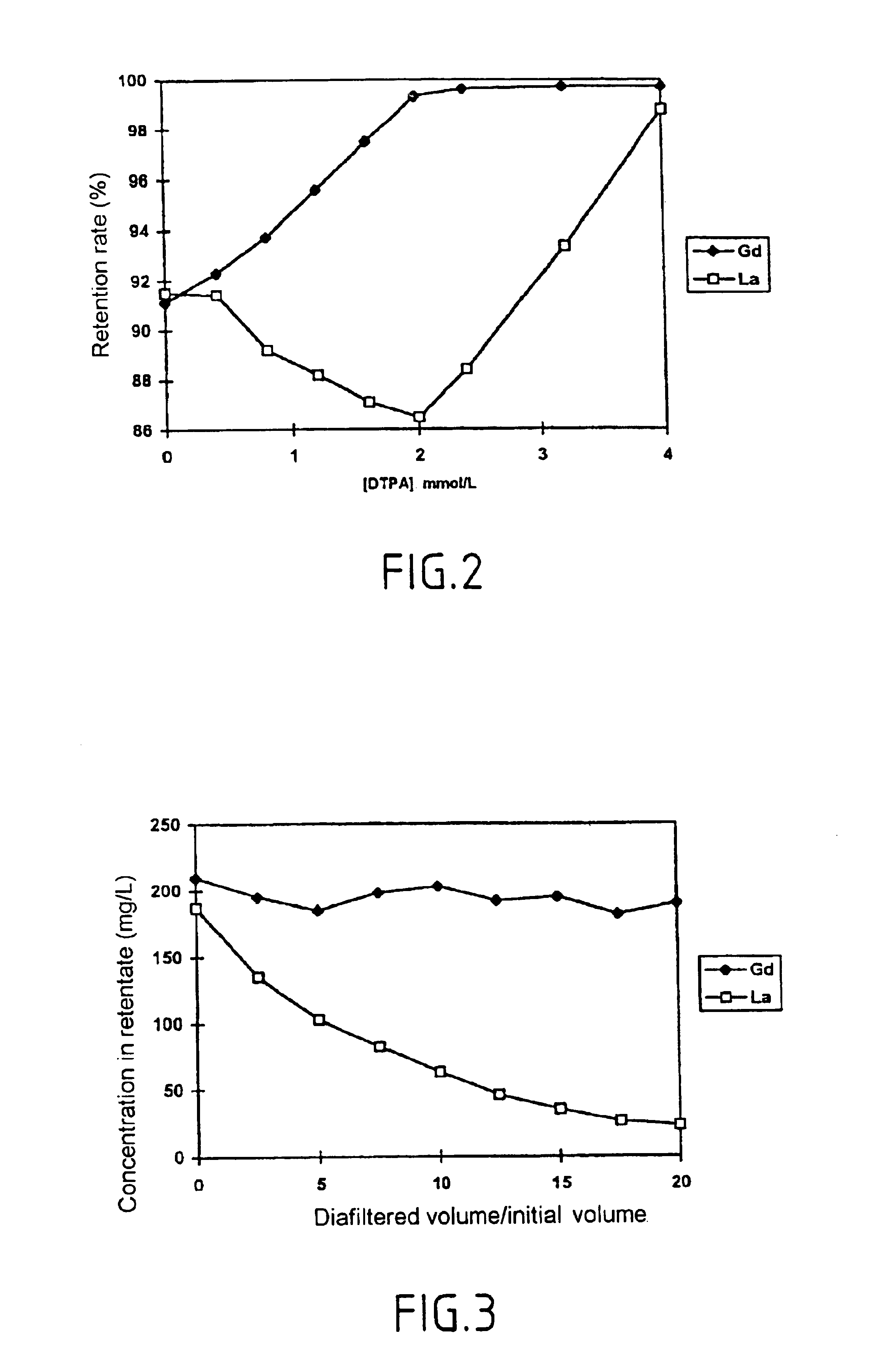Method for separating in an aqueous medium lanthanides and/or actinides by combined complexing-nanofiltration, and novel complexing agents therefor
a technology of complexing and aqueous medium, applied in the field of rare earths, or lanthanides, and radioactive actinide elements, can solve the problems of major technological challenges, difficult separation of lanthanides from one another, and waste generation by liquid-liquid extraction techniques,
- Summary
- Abstract
- Description
- Claims
- Application Information
AI Technical Summary
Benefits of technology
Problems solved by technology
Method used
Image
Examples
example 1
SYNTHESIS OF DTPA BIS(DIETHANOL)AMIDE (1)
In a 500 ml three-necked flask, 10 grams of DTPA dianhydride (27.98 mmol) are dissolved in 150 ml of anhydrous DMF at 80° C. under an inert atmosphere (argon). 17 grams of diethanolamine (167.9 mmol) in 50 ml of DMF are added dropwise and the reaction medium is stirred for 48 hours. The oily residue obtained is separated from the solvent by decantation. After this residue has been dissolved in the minimum volume of water, 800 ml of acetone are added and the viscous precipitate is triturated, isolated from the solvent by decantation and purified on a column of Amberlite IR-120 ion exchange resin by elution with distilled water. 7.98 g of product (1) are obtained in the form of a white powder (50% yield) after evaporation and drying under vacuum.
1H NMR (D2O): 3.1 (t, J=6.25, 4H); 3.48-3.52 (t+s, 10H); 3.59 (t, J=6.2, 4H); 3.76 (t, J=5.2, 8H); 3.91 (s, 4H); 4.49 (s, 4H). 13C NMR (D2O): 50.59, 55.88, 56.62, 58.84, 59.95 (CH2CO2H and NCH2CH2N); 51...
example 2
SYNTHESIS OF THE COPOLYMER DTPA / 4,4′-METHYLENE-DIANILINE (2)
In a 250 ml three-necked flask, 1.179 grams of DTPA dianhydride (3.3 mmol) are dissolved in 120 ml of anhydrous DMF at 50° C. under an inert atmosphere (argon). 595 milligrams of 4,4′-methylenedianiline (3 mmol) in 45 ml of anhydrous DMF are added dropwise and the reaction medium is stirred for 4 hours at 50° C. The reaction mixture is run into 500 ml of diethyl ether. The precipitate is filtered off and washed with 3 times 100 ml of diethyl ether. 1.28 g of product (2) are obtained in the form of a white powder (72% yield) after drying under vacuum.1H NMR (D2O): 7.17 (s broad, 2H); 6.76 (m, 2H); 3.3-2.1 (m, 14H).Calculation of the degree of polymerization by 1H NMR:R area of aromatic CH / area of aliphatic CH2=0.296n=−18R / (20R-8)=2.57
example 3
SYNTHESIS OF DTPA BIS(DI(2-METHOXYETHYL)AMIDE) (3)
12.4 ml of bis(2-methoxyethyl)amine (0.084 mol) dissolved in 40 ml of anhydrous DMF are added dropwise to 5 grams of DTPA dianhydride (0.014 mol) dissolved in 80 ml of anhydrous DMF under argon at 80° C. The reaction medium is stirred for 24 hours. After concentration and the addition of diethyl ether, the oily precipitate is separated from the solvents by decantation. This residue is dissolved in the minimum volume of CHCl3 and reprecipitated in Et2O. A hygroscopic foam (3) (6.43 g, 74% yield) is obtained after drying under vacuum; it is used without further purification.
1H NMR (D2O+NaOD): 2.50 (t, 4H); 2.52 (t, 4H); 2.98 (s, 2H); 3.11 (s, 4H); 3.31 (s, 6H); 3.32 (s, 6H); 3.51 (s, 4H); 3.53-3.56 (m, 16H).
13C NMR (D2O): 45.94, 47.03, 47.81, 49.75, 53.69, 56.29, 57.78, 67.16, 69.56, 69.69 (CH2); 58.63, 59.07 (OCH3); 166.9, 170.5, 175.7 (CO2H and CO).
ES-MS: ES−: 622.1 ([M−H]); ES+: 624.3 ([M+H]+); 646.2 ([M+Na]+).
PUM
| Property | Measurement | Unit |
|---|---|---|
| transmembrane pressure | aaaaa | aaaaa |
| transmembrane pressure | aaaaa | aaaaa |
| transmembrane pressure | aaaaa | aaaaa |
Abstract
Description
Claims
Application Information
 Login to View More
Login to View More - R&D
- Intellectual Property
- Life Sciences
- Materials
- Tech Scout
- Unparalleled Data Quality
- Higher Quality Content
- 60% Fewer Hallucinations
Browse by: Latest US Patents, China's latest patents, Technical Efficacy Thesaurus, Application Domain, Technology Topic, Popular Technical Reports.
© 2025 PatSnap. All rights reserved.Legal|Privacy policy|Modern Slavery Act Transparency Statement|Sitemap|About US| Contact US: help@patsnap.com



